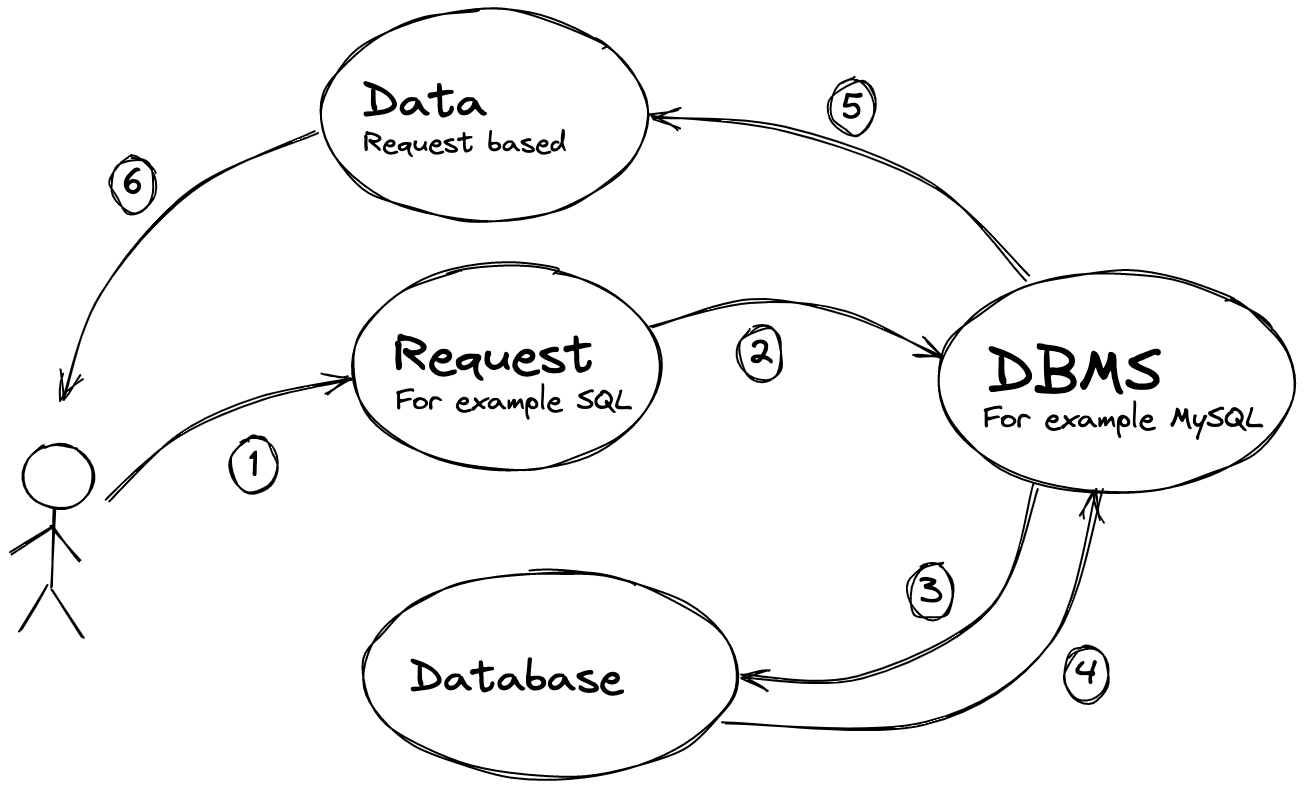Databases and DBMS
Before we start learning SQL, let's get acquainted with the basic concepts about databases. This will help us to understand the scope of SQL and its environment. execution.
A database is a set of data stored in a structured way
In fact, this is just a repository of some information, nothing more. Databases themselves would be of no interest if there were no database management systems.
database management system is a set of language and software tools that performs access to data, allows them to be created, modified and deleted, provides data security, etc.
In simpler terms, a DBMS is a system that allows create databases and manipulate information from them.
The simplest scheme for working with a database:

DBMS rating
At the moment, the rating of database management systems based on db-engines is as follows:
- Oracle - relational DBMS
- MySQL - relational DBMS
- Microsoft SQL Server - relational DBMS
- PostgreSQL - relational DBMS
- MongoDB - document-oriented databases
- Redis - key-value databases
- Snowflake - cloud relational DBMS
- Elasticsearch - search engine
- IBM Db2 - relational DBMS
- SQLite - relational DBMS
It can be noted that 7 of the 10 most popular DBMS are relational. You made the right choice to study them 😉.
Let's check how we learned the topic, choose the correct statement: